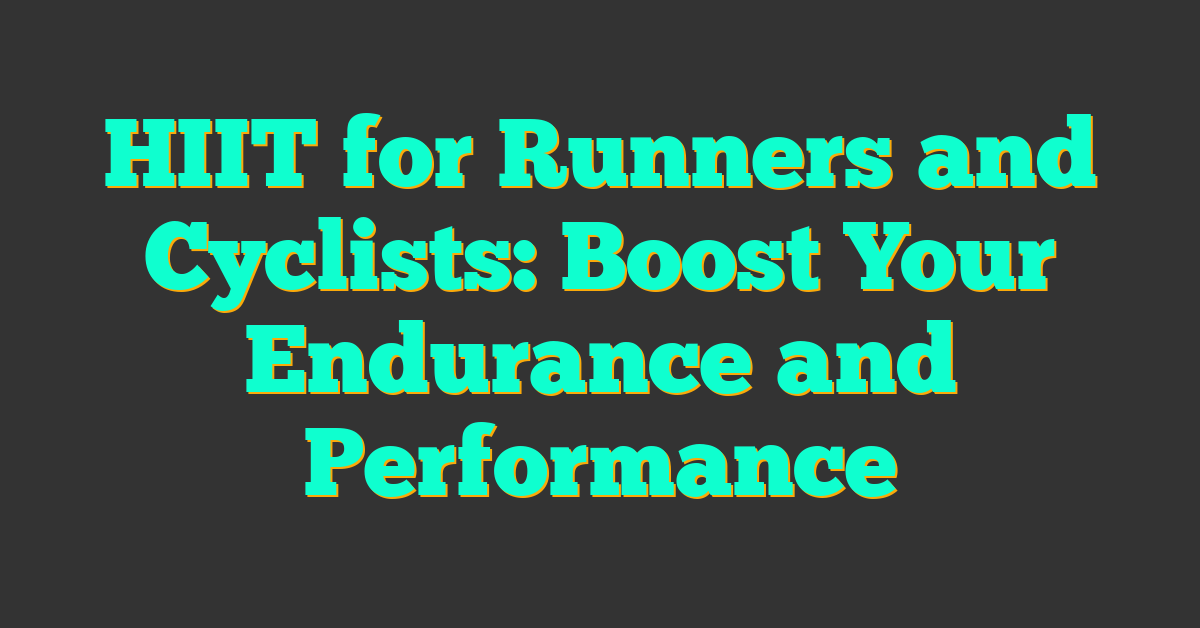If you are new to triathlon training, you may be wondering how to optimize your workouts to achieve the best results. One key factor to consider is your heart rate. Understanding the basics of heart rate and how it relates to swimming, cycling, and running can help you train more effectively and improve your performance.

In this guide, we will provide a simplified, definitive overview of heart rate training for triathletes. We will cover the basics of heart rate, including how to calculate your maximum heart rate and determine your heart rate zones. We will also discuss how heart rate varies during swimming, cycling, and running, and how to use heart rate data to optimize your training. Whether you are a beginner or an experienced triathlete, this guide will provide valuable insights to help you reach your goals.
Key Takeaways
- Understanding your heart rate zones is essential for optimizing your triathlon training.
- Heart rate varies during swimming, cycling, and running, and each sport requires a different approach to heart rate training.
- By integrating heart rate data into your training plan, you can improve your endurance, speed, and overall performance.
Understanding Heart Rate Basics
https://www.youtube.com/watch?v=Mlgs4_54q8Y&embed=true

If you’re new to triathlon training, understanding the basics of heart rate is essential. Heart rate is the number of times your heart beats per minute (BPM). It’s an important metric for measuring your fitness level and tracking your progress. In this section, we’ll cover the basics of heart rate, including heart rate zones and maximum heart rate, and how to monitor your heart rate for training.
Heart Rate Zones and Maximum Heart Rate
Heart rate zones are a way to measure the intensity of your workout. There are five heart rate zones, each with a different percentage of your maximum heart rate (MaxHR). Your MaxHR is the highest number of BPM your heart can reach during exercise. It’s important to know your MaxHR to determine your heart rate zones.
To calculate your MaxHR, you can use the formula: Maximum Heart Rate for Males = 208.609 – (0.716 x age) or Maximum Heart Rate for Females = 209.273 – (0.804 x age). Once you know your MaxHR, you can calculate your heart rate zones using the percentages in the table below:
| Heart Rate Zone | Percentage of MaxHR |
|---|---|
| Zone 1 | 50-60% |
| Zone 2 | 60-70% |
| Zone 3 | 70-80% |
| Zone 4 | 80-90% |
| Zone 5 | 90-100% |
Monitoring Heart Rate for Training
To monitor your heart rate during training, you can use a heart rate monitor. A heart rate monitor is a device that measures your heart rate in real-time. It can be worn on your wrist or chest, and it can provide you with instant feedback on your heart rate.
When training, it’s important to stay within your heart rate zones to ensure you’re getting the most out of your workout. For example, if you’re doing a long, slow run, you should aim to stay in Zone 2. If you’re doing a high-intensity interval workout, you should aim to stay in Zone 4.
In conclusion, understanding the basics of heart rate is essential for triathlon training. By knowing your MaxHR and heart rate zones, and monitoring your heart rate during training, you can ensure you’re getting the most out of your workouts and reaching your fitness goals.
Swimming: Techniques and Heart Rate
https://www.youtube.com/watch?v=abOalVHU5dU&embed=true
Swimming is a low-impact exercise that can help you improve your cardiovascular health, build muscle, and burn calories. When it comes to heart rate, swimming can be a bit tricky to monitor, but it is still an effective way to improve your fitness level.
The Role of Buoyancy and Heart Rate
Buoyancy is a key factor in swimming, and it can affect your heart rate. When you are swimming, your body is supported by the water, which reduces the impact on your joints and muscles. This can make swimming a great option if you have joint pain or other conditions that make high-impact exercise difficult.
Because of the buoyancy of the water, your heart rate may be lower when you swim compared to other exercises like running or cycling. However, this doesn’t mean that swimming isn’t a good workout for your heart. In fact, swimming can be a great way to improve your cardiovascular health, especially if you swim at a high intensity.
Monitoring and Managing Heart Rate While Swimming
Monitoring your heart rate while swimming can be a bit challenging, but it is still possible. One way to monitor your heart rate is to use a waterproof heart rate monitor. These devices can be worn on your wrist, chest, or arm, and they can provide you with real-time feedback on your heart rate.
Another way to monitor your heart rate while swimming is to use the perceived exertion scale. This is a subjective measure of how hard you feel like you are working. By paying attention to how hard you feel like you are working, you can get a good idea of whether you are working at the right intensity to improve your fitness level.
To manage your heart rate while swimming, you can use a variety of techniques. For example, you can vary your stroke rate or your stroke type to increase or decrease your heart rate. You can also use interval training to work at a high intensity for short periods of time, followed by periods of rest.
Overall, swimming can be a great way to improve your fitness level and your cardiovascular health. By understanding the role of buoyancy and heart rate in swimming, and by monitoring and managing your heart rate while you swim, you can get the most out of this low-impact exercise.
Cycling: Power and Heart Rate Dynamics
https://www.youtube.com/watch?v=apUsChxjnkI&embed=true
Cycling is a great way to improve your cardiovascular fitness while also building your leg muscles. When it comes to measuring your effort on the bike, there are two main metrics to consider: power and heart rate.
Functional Threshold Power (FTP) in Cycling
Functional Threshold Power (FTP) is the maximum power output you can sustain for one hour. This metric is used by many cyclists as a benchmark for their fitness level and to set training zones. To measure your FTP, you can take a 20-minute test where you ride as hard as you can for 20 minutes and then take 95% of your average power during that time.
FTP is a useful metric because it takes into account your individual fitness level and allows you to tailor your training to your specific needs. By tracking your FTP over time, you can see how your fitness is improving and adjust your training accordingly.
Equipment and Heart Rate Tracking
« Headlamp for Running and Skiing: Stay Safe and Visible on Your Adventures
To track your heart rate during cycling, you’ll need a heart rate monitor. Many GPS cycling computers, such as those made by Garmin, come with built-in heart rate monitors. You can also use a chest strap or wrist-based heart rate monitor.
When it comes to tracking your heart rate during cycling, there are a few things to keep in mind. First, your heart rate will be lower while cycling compared to running because cycling is a lower-impact activity. Second, your heart rate may be affected by factors such as heat, humidity, and fatigue.
To get the most accurate heart rate data, it’s important to wear your heart rate monitor correctly and to calibrate it regularly. You can also use heart rate data to set training zones and track your progress over time.
Another useful piece of equipment for cyclists is a turbo trainer. A turbo trainer allows you to ride your bike indoors and provides a controlled environment for training. Many turbo trainers also come with built-in power meters, which can be a useful tool for tracking your progress and setting training zones.
In conclusion, by tracking your power and heart rate during cycling, you can get a better understanding of your fitness level and tailor your training to your specific needs. With the right equipment and training plan, you can improve your cycling performance and reach your fitness goals.
Running: Impact on Heart Rate and Performance
https://www.youtube.com/watch?v=FoDDN7T5whY&embed=true
If you’re a runner, you know that running can have a big impact on your heart rate and overall performance. In this section, we’ll explore how heart rate and pacing strategies, as well as terrain, can affect your running experience.
Heart Rate and Pacing Strategies
When it comes to running, your heart rate is a good indicator of how hard you’re working. Generally, the harder you work, the higher your heart rate will be. However, it’s important to find the right balance between pushing yourself and overworking yourself.
To find the right balance, many runners use pacing strategies. This involves running at a consistent pace throughout your run, rather than starting out too fast and burning out later. By maintaining a steady pace, you can keep your heart rate in a moderate range, which is ideal for long-distance running.
Terrain and Heart Rate Variability
Another factor that can affect your heart rate while running is the terrain you’re running on. Running on flat, even surfaces is generally easier on your body than running on uneven or hilly terrain. This is because running on uneven terrain can cause your heart rate to spike, which can lead to fatigue and injury.
Additionally, the type of shoes you wear can also affect your heart rate. Shoes that provide good support and cushioning can help reduce the impact on your joints, which can help keep your heart rate in a healthy range.
In summary, when it comes to running, it’s important to pay attention to your heart rate and pacing strategies, as well as the terrain you’re running on and the shoes you’re wearing. By finding the right balance, you can improve your performance and reduce your risk of injury.
Triathlon Training: Integrating Swim, Bike, Run
https://www.youtube.com/watch?v=wooLaOhLg6U&embed=true
When preparing for a triathlon, it is essential to integrate swim, bike, and run training into your routine. Each discipline requires a different set of skills and physical abilities, so it is important to train each one separately and then combine them in a cohesive manner.
Transitioning Between Disciplines
Transitioning between disciplines is a crucial aspect of triathlon training. It is important to practice transitioning between swimming, cycling, and running to build your endurance and prepare your body for the race. You can practice transitions by doing brick workouts, which involve combining two disciplines back-to-back, such as a swim followed by a bike ride or a bike ride followed by a run.
During transitions, it is important to manage your heart rate and stress levels. Try to keep your heart rate at a moderate level during transitions to avoid overexerting yourself. You can also use breathing techniques to help manage your stress levels and stay focused during transitions.
Balancing Intensity and Recovery
Balancing intensity and recovery is crucial to avoid overtraining and injury. It is important to listen to your body and give it time to recover between training sessions. You can also incorporate active recovery into your routine, such as yoga or stretching, to help your body recover and reduce stress.
When training for a triathlon, it is important to find your threshold for each discipline. Your threshold is the point at which you are working at your maximum capacity without overexerting yourself. By finding your threshold, you can train more effectively and avoid injury.
Incorporating interval training into your routine can also help you balance intensity and recovery. Interval training involves alternating between high-intensity and low-intensity exercise to build endurance and improve performance.
In conclusion, integrating swim, bike, and run training into your routine and balancing intensity and recovery are key to preparing for a triathlon. By practicing transitions and finding your threshold for each discipline, you can train effectively and avoid injury. Remember to listen to your body and give it time to recover between training sessions.
Frequently Asked Questions
https://www.youtube.com/watch?v=6fID1DYtVXo&embed=true
How can I calculate my heart rate zones for different sports like swimming, biking, and running?
Calculating heart rate zones is important for athletes to train effectively and avoid overtraining. There are many ways to calculate heart rate zones, from lab-based stress tests to mathematical formulas. One popular method is the Lactate Threshold Heart Rate (LTHR) test, which involves a 30-minute time trial at maximum effort. You can use this test to calculate your heart rate zones for running, biking, and swimming. TrainingPeaks provides a quick guide to setting zones for each sport.
What are the differences between a swimmer’s heart and a runner’s heart?
Swimming and running are both aerobic exercises that increase heart rate and improve cardiovascular health. However, there are some differences between a swimmer’s heart and a runner’s heart. According to SportTracks, swimming heart rate zones should be set 10 to 15 beats-per-minute lower than they are on land, depending on your fitness and skill level in the water. This is because the horizontal nature of swim strokes helps to reduce the workload of your heart. Additionally, well-trained swimmers under the age of 19 may have a maximal heart rate that is 5 to 7 BPM lower than their predicted maximum.
How can I safely increase my heart rate while swimming?
Swimming is a low-impact exercise that is easy on the joints, making it a great option for athletes of all ages and fitness levels. To safely increase your heart rate while swimming, you can try interval training, which involves alternating periods of high-intensity effort with periods of rest or low-intensity effort. You can also try using swimming equipment like kickboards, pull buoys, and paddles to increase resistance and intensity. However, it’s important to start slowly and gradually increase the intensity of your workouts to avoid injury and overtraining.
What is the typical resting heart rate for an Olympic swimmer?
Resting heart rate is an important indicator of cardiovascular health and fitness. According to Triathlon Budgeting, the typical resting heart rate for an Olympic swimmer is between 40 and 60 beats per minute (BPM). This is lower than the average resting heart rate of 60 to 100 BPM for most adults, which is a reflection of the athlete’s high level of cardiovascular fitness.
Are heart rate zones for running and cycling similar, and how do they compare?
Heart rate zones for running and cycling are similar but not identical. According to Joe Friel Training, heart rate zones for cycling tend to be slightly lower than those for running due to the lower impact and reduced weight-bearing nature of cycling. However, the overall structure of the zones is similar, with Zone 1 being the easiest effort and Zone 5 being the hardest effort.
How do I determine my Zone 2 heart rate for endurance training?
Zone 2 heart rate is the sweet spot for endurance training, where you can build aerobic fitness and endurance without overtaxing your body. To determine your Zone 2 heart rate, you can use the LTHR test or the Maximum Heart Rate (MHR) test. Once you have your LTHR or MHR, you can use a percentage-based formula to calculate your Zone 2 heart rate. For example, if your LTHR is 180 BPM, your Zone 2 heart rate would be 135 to 153 BPM, or 75% to 85% of your LTHR.










